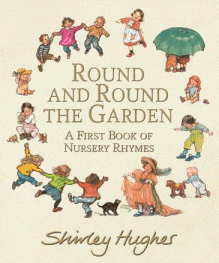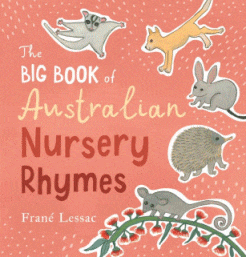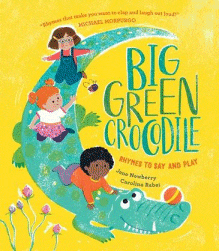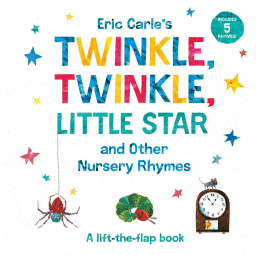
Round and Round the Garden: A First Book of Nursery Rhymes
Round and Round the Garden: A First Book of Nursery Rhymes
Shirley Hughes
Walker, 2021
64pp., hbk., RRP $A27.99
9781406390315
Nursery rhymes – those jingles, riddles, tongue-trippers, finger games, lullabies and prayers that we can still recall from our own childhood – are the heritage of centuries of oral tradition as they were passed from one generation to the next down through the ages. From the research of Iona and Peter Opie , pioneers in the study of childhood culture, play and literature, it is evident that as well as the oral retelling, nursery rhymes have been in printed format since the reign of England’s George II in the mid-1700s meaning that many more have survived than otherwise might have.
So, as childhood entertainment becomes so much more diverse in both culture and format this collection of 60 of the more well-known rhymes has an important place in not only preserving this form of children’s literature from the past but also in introducing our youngest to common chants that it is presumed they know. How many times have they heard, “Rain, rain go away” recently, the drought being all but a memory? And while there is also a doorway into times past as many spring from people or events or yesteryear – who has actually seen a child running through the town in a nightgown and carrying a candlestick? – they can also become a springboard to a whole range of investigations. For example, “The Old Woman who lived in a Shoe” creates opportunities to explore mathematics; “Humpty Dumpty” is a great introduction to investigate the things that come from eggs; “Twinkle Twinkle Little Star” can take them to the stars and back; and Little Miss Muffet opens up the world of spiders and other mini-beasts Below is a table of contents I prepared for a book I was going to write called Rhyme and Reason which would have introduced littlies to information literacy through nursery rhymes.
Rhyme
|
General Focus
|
| What are little boys made of? |
The child as a person |
| The old woman in a shoe |
The family and the class |
| Boys and girls come out to play |
Games and activities |
| Little Miss Muffet; Incy Wincy Spider |
Fears, spiders |
| Twinkle Twinkle Little Star; The man in the moon; Hey Diddle Diddle |
Day & Night; Space |
| Solomon Grundy |
Routines, Days of the Week |
| Hickory Dickory Dock |
Time , Mice |
| Sing a song of sixpence |
Money & Budgeting |
| Three Little Kittens |
Pets |
| One, two three four five; One, two, buckle my shoe |
Counting; fish |
| Hot Cross Buns |
Easter |
| The crooked little man |
Houses and homes |
| It’s raining it’s pouring; Whether the weather be fine; I hear thunder |
Weather |
| Six little mice sat down to spin |
Staying safe; Protective behaviours |
| Mary had a little lamb |
School, On the Farm |
| Wee Willie Winkie; Starlight star bright |
Bedtime; Dreams |
| Queen of Hearts |
Honesty, Taking responsibility |
| Thirty days hath September |
Months |
| Baa Baa Black Sheep/ Little Boy Blue |
Farms |
| Hickety Pickety my black hen |
Food |
| Humpty Dumpty |
The secret life of eggs |
| Jack and Jill |
The importance of water |
| Three Blind Mice |
Senses |
| Rub-A-Dub Dub |
Jobs and careers |
| Little Boy Blue |
On the Farm |
Many of these rhymes are in this collection and they are illustrated in a style reminiscent of times gone by, giving the whole that olde-world feeling that many of us associate with the collections that we had in the past. And with some imagination, they could form the basis of a year’s work for our youngest readers either at school or at home!
My research for Rhyme and Reason led me down many fascinating paths, particularly the origins of and history associated with these rhymes but it was more difficult to find illustrated collections. I am thrilled to be able to add this to the tiny collection I was able to acquire. May there be more.



